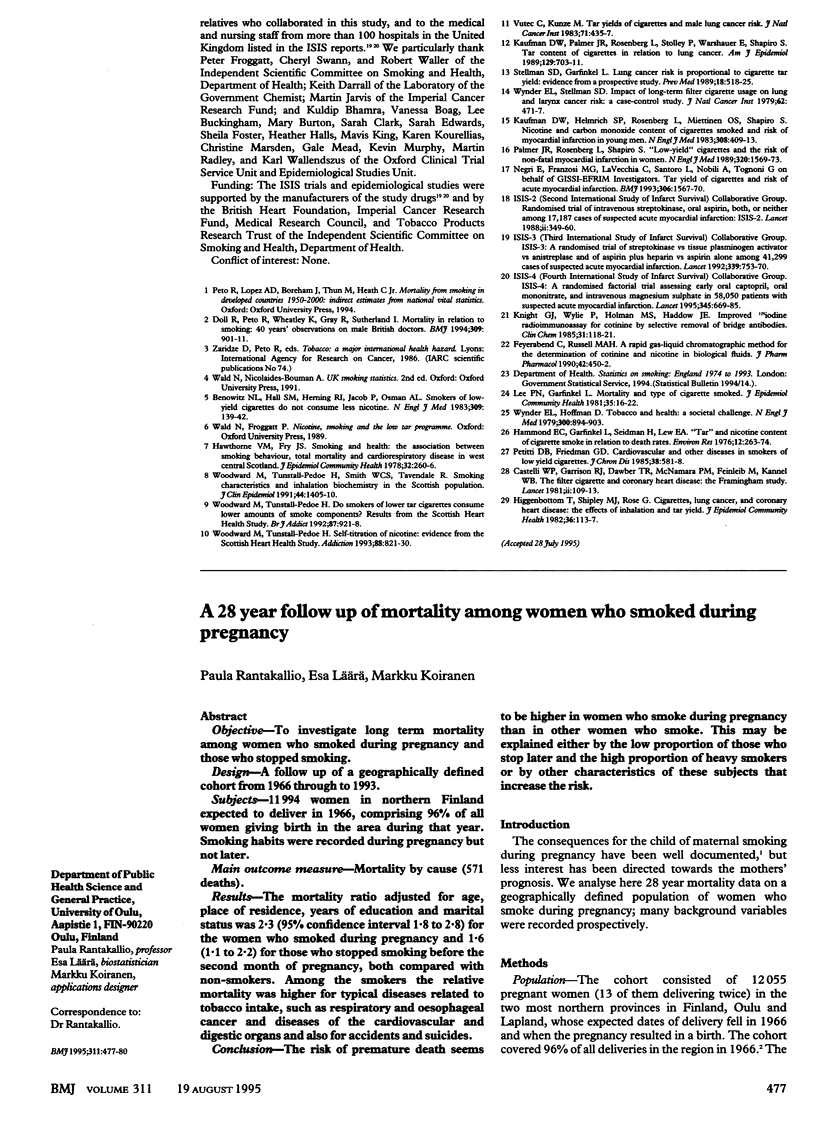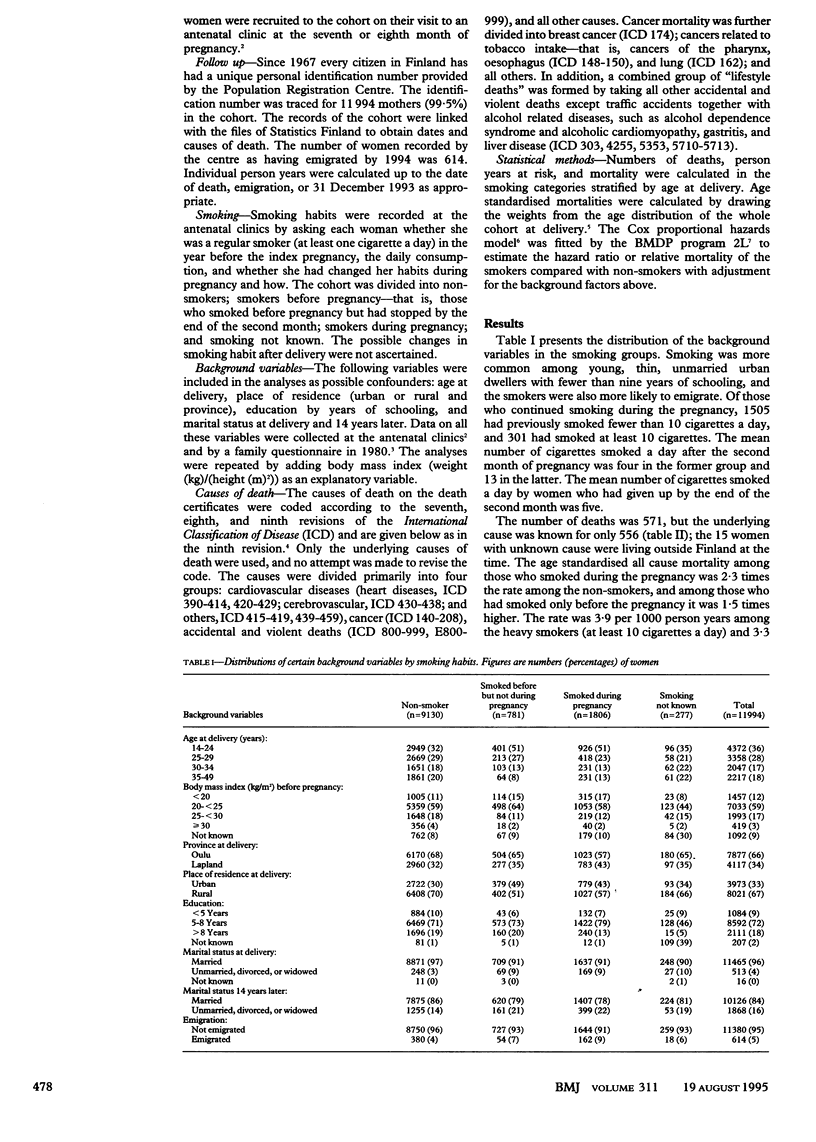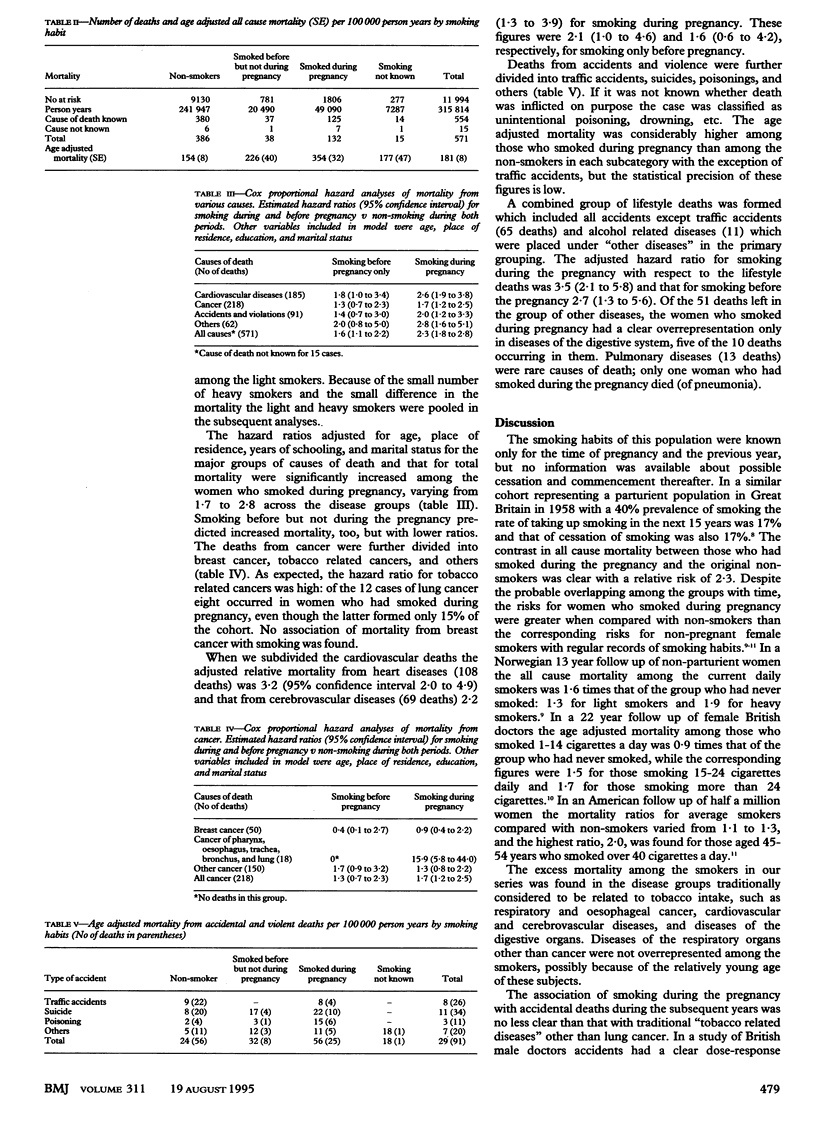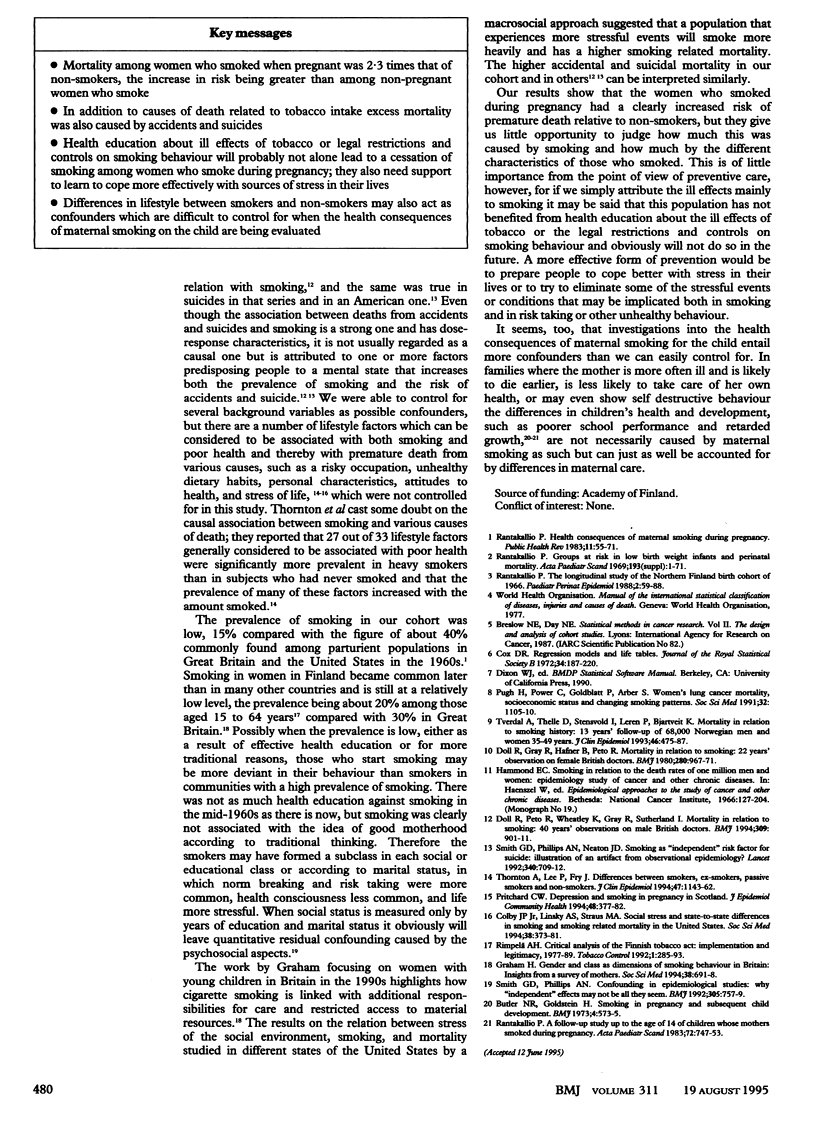Abstract
OBJECTIVE--To investigate long term mortality among women who smoked during pregnancy and those who stopped smoking. DESIGN--A follow up of a geographically defined cohort from 1966 through to 1993. SUBJECTS--11,994 women in northern Finland expected to deliver in 1966, comprising 96% of all women giving birth in the area during that year. Smoking habits were recorded during pregnancy but not later. MAIN OUTCOME MEASURE--Mortality by cause (571 deaths). RESULTS--The mortality ratio adjusted for age, place of residence, years of education and marital status was 2.3 (95% confidence interval 1.8 to 2.8) for the women who smoked during pregnancy and 1.6 (1.1 to 2.2) for those who stopped smoking before the second month of pregnancy, both compared with non-smokers. Among the smokers the relative mortality was higher for typical diseases related to tobacco intake, such as respiratory and oesophageal cancer and diseases of the cardiovascular and digestive organs and also for accidents and suicides. CONCLUSION--The risk of premature death seems to be higher in women who smoke during pregnancy than in other women who smoke. This may be explained either by the low proportion of those who stop later and the high proportion of heavy smokers or by other characteristics of these subjects that increase the risk.
Full text
PDF



Selected References
These references are in PubMed. This may not be the complete list of references from this article.
- Butler N. R., Goldstein H. Smoking in pregnancy and subsequent child development. Br Med J. 1973 Dec 8;4(5892):573–575. doi: 10.1136/bmj.4.5892.573. [DOI] [PMC free article] [PubMed] [Google Scholar]
- Doll R., Gray R., Hafner B., Peto R. Mortality in relation to smoking: 22 years' observations on female British doctors. Br Med J. 1980 Apr 5;280(6219):967–971. doi: 10.1136/bmj.280.6219.967. [DOI] [PMC free article] [PubMed] [Google Scholar]
- Doll R., Peto R., Wheatley K., Gray R., Sutherland I. Mortality in relation to smoking: 40 years' observations on male British doctors. BMJ. 1994 Oct 8;309(6959):901–911. doi: 10.1136/bmj.309.6959.901. [DOI] [PMC free article] [PubMed] [Google Scholar]
- Graham H. Gender and class as dimensions of smoking behaviour in Britain: insights from a survey of mothers. Soc Sci Med. 1994 Mar;38(5):691–698. doi: 10.1016/0277-9536(94)90459-6. [DOI] [PubMed] [Google Scholar]
- Hammond E. C. Smoking in relation to the death rates of one million men and women. Natl Cancer Inst Monogr. 1966 Jan;19:127–204. [PubMed] [Google Scholar]
- Pritchard C. W. Depression and smoking in pregnancy in Scotland. J Epidemiol Community Health. 1994 Aug;48(4):377–382. doi: 10.1136/jech.48.4.377. [DOI] [PMC free article] [PubMed] [Google Scholar]
- Pugh H., Power C., Goldblatt P., Arber S. Women's lung cancer mortality, socio-economic status and changing smoking patterns. Soc Sci Med. 1991;32(10):1105–1110. doi: 10.1016/0277-9536(91)90086-r. [DOI] [PubMed] [Google Scholar]
- Rantakallio P. A follow-up study up to the age of 14 of children whose mothers smoked during pregnancy. Acta Paediatr Scand. 1983 Sep;72(5):747–753. doi: 10.1111/j.1651-2227.1983.tb09805.x. [DOI] [PubMed] [Google Scholar]
- Smith G. D., Phillips A. N. Confounding in epidemiological studies: why "independent" effects may not be all they seem. BMJ. 1992 Sep 26;305(6856):757–759. doi: 10.1136/bmj.305.6856.757. [DOI] [PMC free article] [PubMed] [Google Scholar]
- Smith G. D., Phillips A. N., Neaton J. D. Smoking as "independent" risk factor for suicide: illustration of an artifact from observational epidemiology? Lancet. 1992 Sep 19;340(8821):709–712. [PubMed] [Google Scholar]
- Tverdal A., Thelle D., Stensvold I., Leren P., Bjartveit K. Mortality in relation to smoking history: 13 years' follow-up of 68,000 Norwegian men and women 35-49 years. J Clin Epidemiol. 1993 May;46(5):475–487. doi: 10.1016/0895-4356(93)90025-v. [DOI] [PubMed] [Google Scholar]


